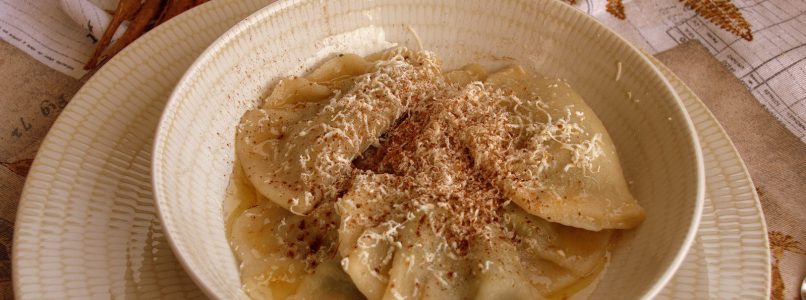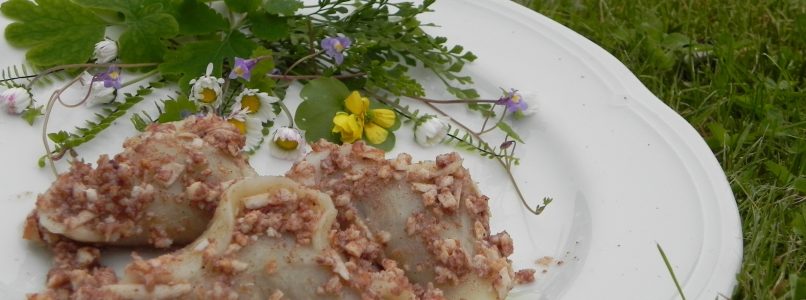A corner of Italy, among the most contaminated from a culinary point of view: an incredible advantage for those who love dishes that look to the North, but not only. Among Cjarsons, Frico and Toc 'n braide here is our selection of places without fail
Let's tell the truth. There Carnia is one of the least Italian areas of Italy: beautiful and green, nestled in the Carnic Alps, north of Udine. Even for the Friulians it is a world apart, the Carnians speak another language than those of the plains, influenced by the neighboring Austria and Slovenia, as well as by the nearby Veneto. It is Central Europe, even more than South Tyrol because Slovenian, Hungarian, Bohemian and Jewish influences are linked to the clear Habsburg influences thanks to the fact that Trieste – the old port of the empire and the Adriatic threshold – is not so far away. And, as always, this being a frontier place is a great advantage for the kitchen. It is no coincidence that the Carnia hosts three Chioccioline, the highest recognition that Slow Food assigns to the places that best defend the tradition and local products. In the specific case: the rare Sauris ham, the mountain cheeses, the apples, the honey, the berries …
A thousand and one Cjarsons
The poetry of Carnic cuisine is represented from the sweet and savory combination of the Cjarsons (but also Cjalsons and Cjalzons according to the areas) which in Friulian language means calzoni. They are a widespread preparation in the plains, but this is where they find their essence: they can be of different shapes (round, half-moon, felucca, boat) and the sizes may vary. It's all wonderfully subjective, each family adopts the one they prefer or even creates their own. But what changes a lot – and creates infinite variations – is the filling (pistùm or pastùm) which is sometimes sweet and sometimes salty. In reality this is due to history and is closely related to the life of the cramârs. Until the 1900s, these brave men armed with crassigne (a sort of wooden backpack divided into small drawers in which they kept the goods) crossed the Alps on foot to sell in the Germanic countries the precious merchandise that they managed to grab in Venice or Trieste. Once back home – after months away – it was a big party. And what eventually remained on the bottom of the crassigne drawers, ended up in the filling of the Cjarsons that the women prepared to celebrate.
A filling of the most varied
They could be spices, sultanas and dried fruit (plums, figs), but also biscuits and cocoa, candied fruit, herbs (mint and lemon balm) and the filling obviously changed every time from year to year from house to house. On the contrary, the salty version is rich in smoked ricotta, boiled potatoes, roasted onion and herbs. Tradition has it that in Carnia they were prepared for Christmas Eve as a lean dish, on the plain, however, it was Easter tradition. Each recipe, each version, takes its name from the countries or valleys of reference, but there is no Carnic family that does not have a codified recipe, handed down from generation to generation and preserved as a precious heirloom to be transmitted to descendants.
Cheese (good) reigns
Carnia is also one of the lands of Frico, little or not known outside Friuli. It seems that the first recipe, from the 15th century, is attributed to the famous master Martino, cook of the Patriarch of Aquileia. Born as a sweet dish, to which sugar or cinnamon was added, today the Frico has become salty, of which there are many variations. However, they can be traced back to two main types: the soft one, a sort of cheese omelette with potatoes and onion, and the crunchy one which is prepared with grated cheese left to set on a high flame. The traditional triptych is completed by the Toc ’in braide (literally dipping in the farm) usually proposed as an appetizer. It is made with a very soft polenta where a sauce (toc) consisting of a fondue of milk and cheese is placed in the center: it is seasoned with corn flour browned in butter. Poor cuisine in execution, very caloric and absolutely delicious: long live Carnia (free or Italian whatever it is) and the ten places in our selection where you will find yourself very well.
Sot la Napa – Prato Carnico
A well-kept place, inside a 17th century house, where mother and daughter do not derogate from traditional cuisine: smoked trout, duck blecs (it's an egg pasta), frico with polenta. The raw materials come from the family organic farm, many wines are natural.
Riglarhaus – Sauris
The wooden and stone chalet that houses the family-run restaurant is very beautiful, with a regular counter and hearth. In high season, when you can enjoy the terrace, in addition to the very classic carnici, there are other specialties such as mues, made with cream cheese and corn flour
Green Frasca – Lauco
A lot of wood, a lot of hospitality in the Gressani family restaurant. Local products are enhanced, but you can also have fun with some clever 'contaminated' recipes, see the interpretation of radicchio and beef fillet with breadcrumbs and almond sauce. Large cellar.
From Alvise – Sutrio
The expression of the Carnic school, with pleasant tweaks in a contemporary key that earned him the Slow Food Chiocciolina. From the Cjarsons to the rack of lamb, everything is taken care of. Apple strudel and tiramisu in Tolmezzo's sweet closing recipe. Five rooms available for a stop.
Aplis – Ovaro
It is a bit like the club house of the tourist center which includes a hotel and residences, surrounded by the greenery of a wildlife park. The cuisine respects tradition (tasting the toc 'n braide is mandatory), but it broadens the horizon especially in meat dishes. Good wines from the region.
Gold Star – Verzegnis
A certainty for fans, historic Slow Food Chiocciolina that follows the route of seasonality. Beyond that its herb Cjarsons are cult of Carnia, there are less popular dishes such as the salad of marinated twigs, the venison, the panna cotta with pollen.
Borgo Pascolle – Cavazzo Carnico
The patrons were teachers: the taste for research remained (the raw materials are all local and largely organic) and the pleasure of telling the good dishes that come to the table. Tradition is safe, but some new ideas peep out like the char tempura with turmeric.
La Fuèo – Rigolato
In the heart of the Carnic Alps, a rural setting well renovated by the patron chef with outdoor tables. From the cured meats and cheeses to the small dessert menu, through the soups and meats in salmì, here we make rigorous cuisine that pays homage to the past and the territory.
To Peace – Sauris
Restaurant-inn with a unique history (let you tell it), managed for over a century by the Scheneider family: the surname also makes sense in the kitchen, because the dishes are partly Carnic and partly German, always in the name of goodies. The selection of grappas is formidable.
Bellavista – Ravascletto
It is the restaurant of a hotel where the terrace with a splendid view makes the dining experience even more pleasant. The kitchen makes good use of local products, even the least discounted ones, for dishes such as blueberry and porcini tortelli or tagliatelle with yellow and mauve cream.


